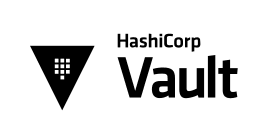Tag: PCI
Guide to Installing and Configuring Vault

What is Vault?
Vault protects and secures access to multiple types of confidential data. It stores and manages sensitive password information, API keys, and access tokens that exist in a low trust environment and generates dynamic access to authenticate users to ensure they have authorized ingress and availability to a file, location, service, or application.
Fully Managed Cloud App Infrastructure Protection (AIP) (formerly Threat Stack)
Introduction
This article will review some of the more technical aspects of F5 Distributed Cloud AIP. F5 Distributed Cloud AIP is a platform-independent intrusion detection system (IDS) designed to provide users with a unique view into various integrated server security functions. It monitors both Linux and Windows servers as well as Kubernetes or other container-based server infrastructures to observe behaviors and detect malicious, uncommon, and risky activity.
What is SIEM?

Security Information and Event Management (or SIEM) is a subset of the computer security field, where applications and services join forces with security event management and security information management. When united, these disciplines provide significantly improved real-time statistical data and threat analysis of alerts generated by the related applications. The 2021 Internet Security Threat Report from Sophos denotes that are not only the number of attacks on the rise but also the diverse nature of methodologies and vectors of incursions used. This necessitates the fact that adding a SIEM is especially warranted at this time.
What is Blockchain? A Tutorial

The idea of blockchain itself may sound complicated, but the premise is simple. Blockchain is a zero-trust, fully decentralized peer-to-peer data storage system that spreads verified information across participants in the chain, referred to as nodes. Blockchain stores this information in blocks that are chained together. As new data arrives, it is recorded into a block. Once a block has been filled with information, it is linked to the previous block. This process allows the data to be bound together in sequential and chronological order.
How to Install an SSL on a Core/Unmanaged Ubuntu Server
Why do I Need to Install or Reinstall My SSL Certificate?
According to Globalsign;
How to Install an SSL on a Core/Unmanaged CentOS Server
Why do I Need to Install or Reinstall My SSL Certificate?
According to Globalsign
How to Implement Zero Trust Security in 5 Steps
Zero Trust security is the concept, methodology, and threat model that assumes no user, system, or service operating within a secured internal environment should be automatically trusted. It put forward that every interaction must be verified when trying to connect to a system before being granted access. This concept uses micro-segmentation, and granular edge controls based on user rights, application access levels, service usage, and relation to the location to determine whether to trust a user, machine, or application seeking to access a specific part of an organization.
How Was My Website Compromised?
In this tutorial, we will look at several methods that are used to compromise a website. In today's world, websites use multiple procedures that represent the core functions of a modern business. Whether you have an eCommerce site or a business card site, a website is essential for driving business growth. We can safely state that a website is a unique image of your respective business.
Lynis: A Security Auditing Tool For Linux
What is Lynis?
Lynis is a well known, seasoned security tool for Linux based systems (including macOS and/or other Unix-based operating systems. It performs an extensive health scan of your systems to support system hardening and compliance testing. The project is open-source software with the GPL license and available since 2007.
Ensure Your Electronic Payments are PCI DSS Compliant
If you process credit cards on a website, your site needs to be in compliance with the Payment Card Industry Data Security Standard. (This is abbreviated as PCI DSS, and even more often referred to simply as PCI.) PCI compliance certifies that your organization takes all necessary steps to protect sensitive customer data and provides a set of standards for your infrastructure and server setup. While Liquid Web does not offer full PCI compliance certification, we do offer a separate service that scans your server to see that PCI DSS requirements are met, a great tool during the compliance process.
Our Sales and Support teams are available 24 hours by phone or e-mail to assist.

